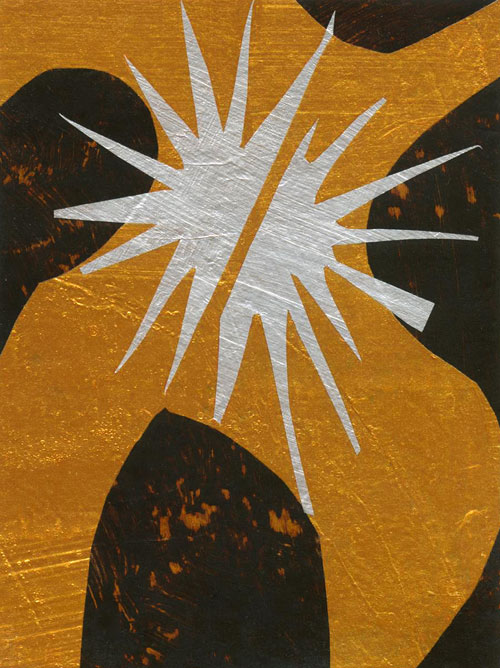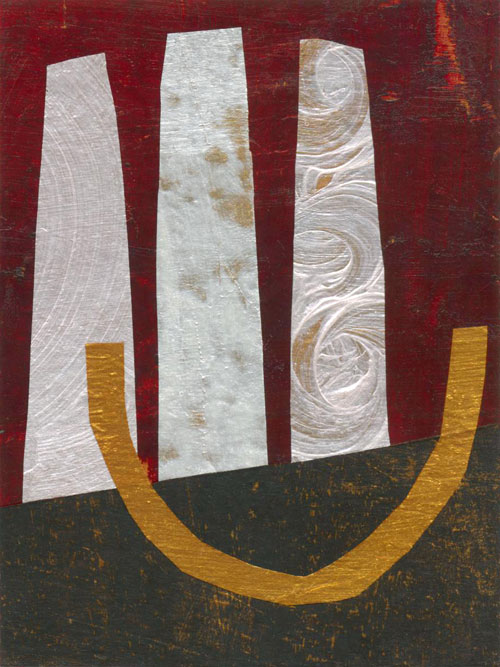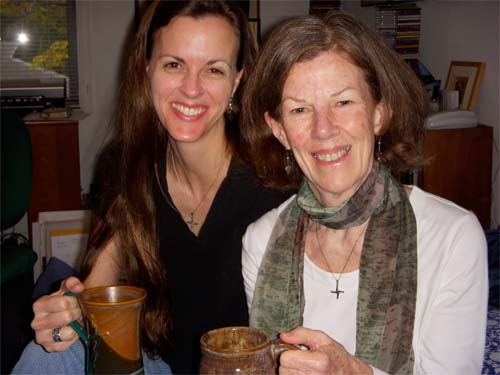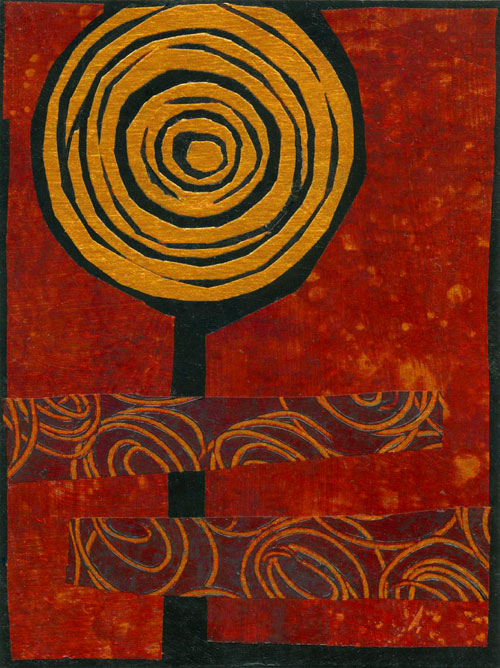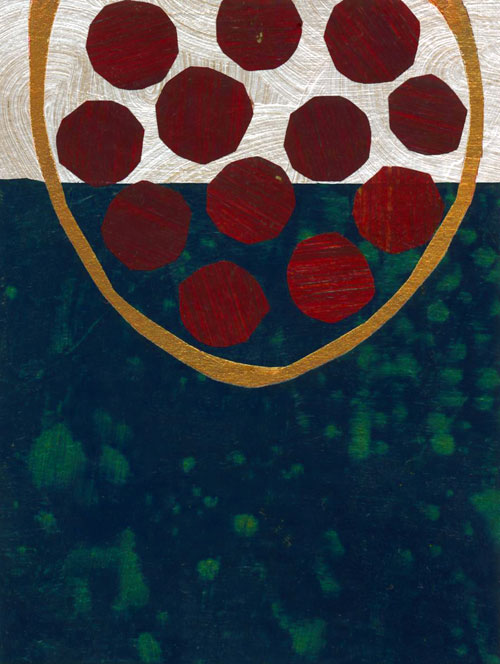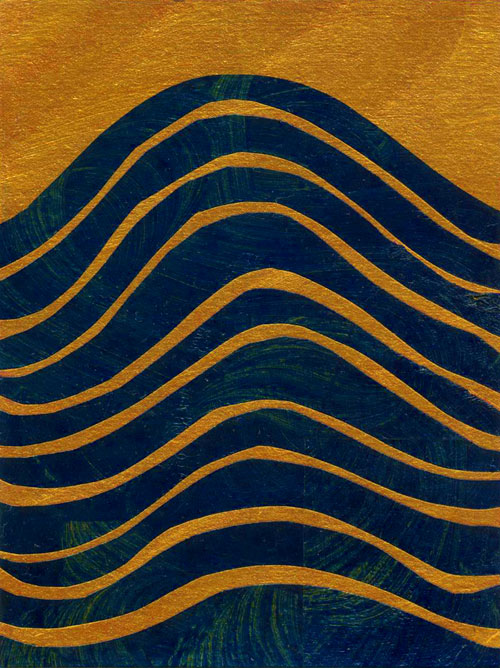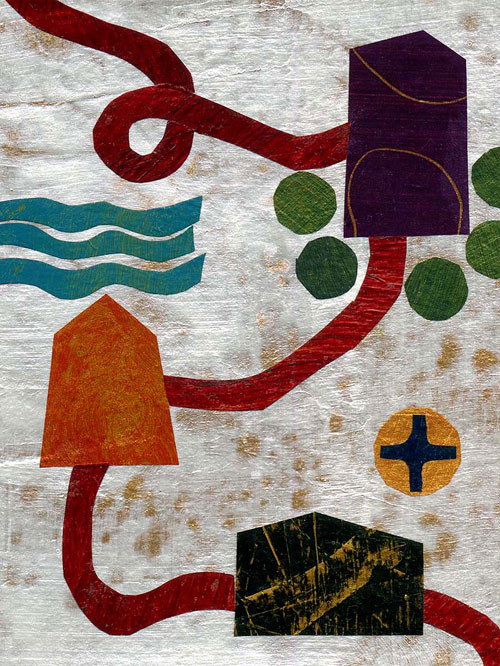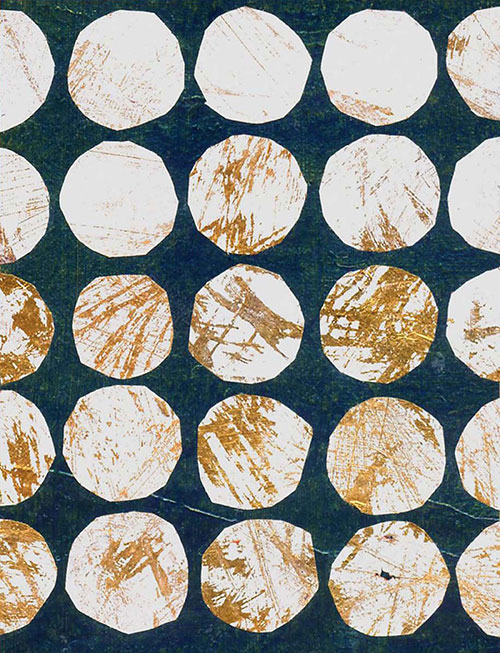 Image: Transfiguration © Jan Richardson
Image: Transfiguration © Jan Richardson
Reading from the Gospels, Transfiguration Sunday, Year B:
Mark 9.2-9
One of the greatest challenges in being a writer—or an artist or a preacher, for that matter—is discerning what to reveal and what to conceal. It’s a tricky thing, figuring out how much of our own experience should make its way into our work in an obvious fashion. There’s no well-defined line, though I find that my gut tends to sound the alert when it senses that something I’m reading or viewing or listening to has tilted toward providing Too Much Information.
The TMI syndrome doesn’t simply involve an overabundance of content; sometimes it’s a matter of timing. I read a book some years ago that the author crafted around a profound experience that had taken place not all that long before she began to write about it. I remember wishing she had waited a while. Clearly the act of telling the story was an integral part of how she processed the experience, but it struck me that both she and the story would have benefited from giving herself more time and space before offering that experience to the public. I find myself wondering what the story feels like to her years later, how the experience of sitting with it, pondering it, reading it over time might have honed and deepened her telling of it.
I’ve been thinking about that elusive line between revelation and concealment as I’ve pondered the gospel lection for next Sunday. It seems we’ve only recently tidied up from Christmas and Epiphany, and we’re already approaching Transfiguration Sunday and the threshold of Lent. Next Sunday’s reading beckons us to pause and gather ourselves for a moment in this space between the seasons of Epiphany and Lent, and to give thought to the questions this passage poses. Mark does the transfigurative honors for us this year with his account of this strange journey that Jesus takes with a trio of his disciples.
The transfiguring of Jesus provides a dazzling, dizzying experience for those who have accompanied him up the mountain. One can well understand that Peter, James, and John would desire to find a form for their experience, some kind of container to help them absorb and define what has taken place. We perceive this in Peter’s impulse to construct dwellings for Jesus, Moses, and Elijah. Faced with an event of overwhelming spiritual import, he responds at a physical level: Let me build something.
Peter’s offer is still on his lips when a bright cloud envelops them, a voice from within it speaking words akin to those that came from heaven at the moment of Jesus’ baptism: “This is my Son, the Beloved; with him I am well pleased; listen to him!” The word for what the cloud does is overshadow, from the Greek word episkiazo. We’ve seen this word before. It appears in the angel Gabriel’s conversation with Mary, when he responds to her question about how it will be possible for her to give birth to the child whom he has asked her to bear. “The Holy Spirit will come upon you,” he tells her, “and the power of the Most High will overshadow you” (Luke 1.35).
In the gospels, the Annunciation is the only occasion besides the Transfiguration that this word appears. The gospel writers’ use of the word draws our attention to the resonance between the story of the Annunciation to Mary and the story of the Transfiguration. Each tale reminds us that we cannot contain or confine God within man-made structures. When God shows up, God often appears in and through people: God goes not for architecture but for anatomy. Or, rather, God makes architecture of our anatomy: God seeks to make of us a dwelling, a habitation for the holy.
This business of being host to the divine is no easy thing, God (literally) knows. So it’s interesting that the soon-to-be-mother Mary and the flat-on-their-faces disciples each receive precisely the same assurance: Do not be afraid. And each goes on their way, carrying something they had not previously known.
In the absence of being able to build physical dwellings, the disciples would have wanted, I suspect, to construct a story about their mountaintop experience: a container of words, at least, that would help them hold and convey what had happened to Jesus and to themselves. Perhaps anticipating this, Jesus enjoins them not to tell what has transpired until after his resurrection. It’s one of the only times that Jesus, a man of action, urges them to wait. This is not for revealing, he tells them; this is for you to carry within you, to ponder, to conceal until the fullness of time.
Perhaps like Mary with the child in her womb.
It was important that Peter, James, and John have that mountaintop experience. It wasn’t important for them to tell the story, not yet; that wasn’t the point of their outing. But the experience would work on them, shape them, and continue to transform and perhaps even transfigure them. The knowledge they carried would alter every future encounter: with Jesus, with their fellow disciples, and with those to whom they ministered.
The story of the Transfiguration calls me to remember that there are times for revealing and times for concealing. There are seasons to tell our story. And there are seasons to hold the story within us so that we can absorb it, reflect on it, and let it (and us) grow into a form that will foster the telling.
As a writer and artist and preacher, I don’t claim to handle that line between revelation and concealment with consistent finesse. But I’ve figured out that one of the core questions in discerning whether to share an experience is this: Whom does the story serve? Does my telling it help you reflect on your life and how God is stirring within it? Or does it merely provide information I think you should know about my own life because I hope it will impress you and induce a response that serves me more than it does you?
How do you discern what and where to share about your life? Whom do your stories serve? Do you have a story of transformation that could help someone else? Is it time to tell it? Is there work that God still needs to do within you so that you can tell the story in the way it needs telling? Whether revealing or concealing, how are you continuing to become a dwelling for the presence of the God who transforms us?
Blessings to you in these threshold days.
[To use the image “Transfiguration,” please visit this page at janrichardsonimages.com. Your use of janrichardsonimages.com helps make the ministry of The Painted Prayerbook possible. Thank you!]
